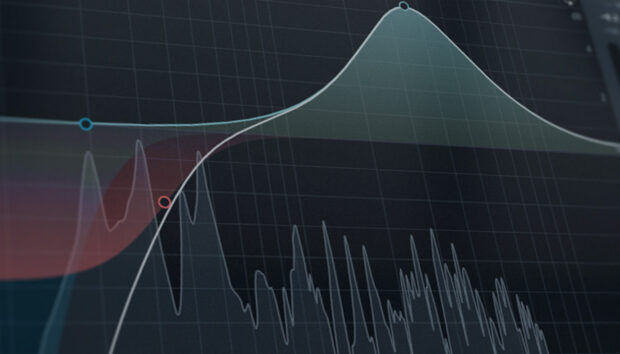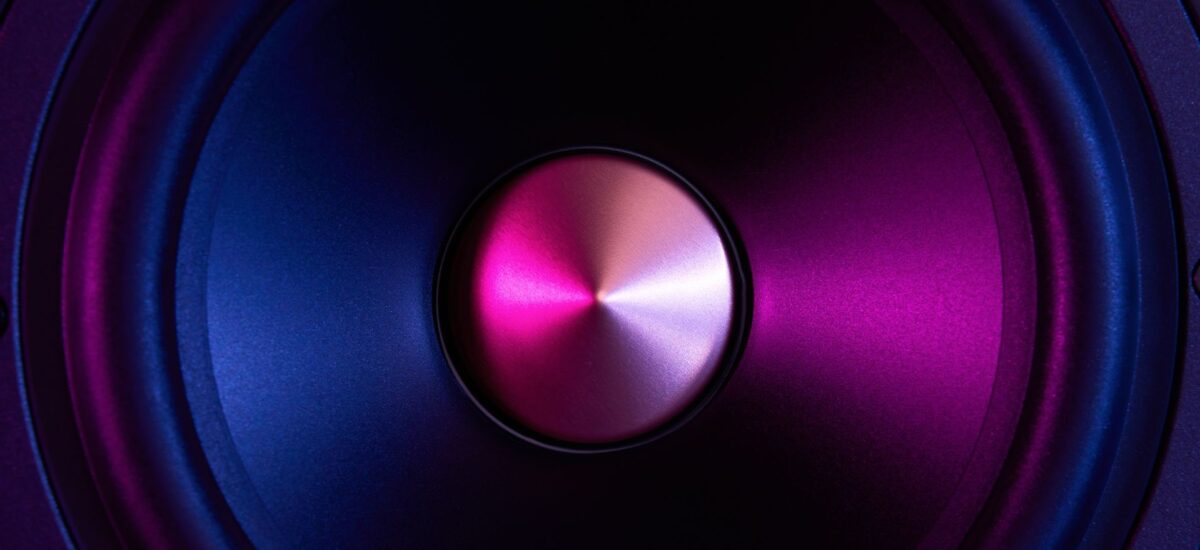
You know that feeling when a track tickles your gut, moves your heart, and resonates with your soul? That’s the magic of sub bass. Whether you’re banging out an electrifying dance anthem or pouring your heart into a touching ballad, getting your sub bass right can really take your tracks from good to unforgettable.
In this guide, we’re going discover what sub bass is, how to make sub bass from scratch, and the best ways for how to use sub bass in your own music. We’re talking everything from basic sound design to those pro tips that will make your sub bass feel just right. So, gear up for a deep dive because we’re gonna be diving deep…down…low. Let’s unlock some low-end secrets and get your music vibrating on a whole new level, shall we?
Jump to these sections
- What is sub bass?
- Examples of sub bass
- How to make sub bass
- How to use sub bass
- Pro tips for sub bass
Follow along with Komplete 14, a powerful suite of instruments, sounds, and processing tools that give you a professional sound.
What is sub bass?
Sub bass represents the deepest layer of bass frequencies, typically ranging from about 20 Hz to 60 Hz. The sub bass frequency spectrum is where you find the lowest of low tones – the type of sound that is felt just as much as it is heard.
Sub bass plays a crucial role in adding depth and body to a track, providing a foundation that other elements can build upon. It’s the part of the sound that you might not always consciously notice when you’re listening to music, but you’d definitely miss its presence if it weren’t there.
In different music genres, sub bass serves various purposes but always remains a key component in shaping the overall feel of the track. In electronic music, for instance, sub bass frequencies are often used to create a powerful, pulsating effect that can drive a track forward. This is evident in genres like drum and bass, dubstep, and house, where the sub bass can be the defining feature of the music. In hip-hop, sub bass provides a deep, resonant backdrop for the vocals, enhancing the rhythm and elevating the lyrical flow.
The use of sub bass extends far beyond these genres, though – underlying everything from ambient to pop music. Its versatility is a testament to its importance in music production. Offering a sense of completeness to any track, sub bass enhances the listening experience by providing depth and power.
Examples of sub bass
Examples of using sub bass effectively in music are plentiful. Tracks like “Limit to Your Love” by James Blake showcase how sub bass can be used to create tension and emotional depth, with the sub bass frequencies bringing a palpable weight to the song. Pro tip: If you’re looking to really hear and feel sub bass tones, it’s best to use a decent pair of headphones or speakers instead of a phone or laptop speakers.
In hip-hop, “A Milli” by Lil Wayne stands as a great example of sub bass mastery. The track’s alternating sub bass line provides a raw foundation that elevates the entire composition, driving the rhythm forward with an intensity that’s hard to ignore. This backdrop not only complements Lil Wayne’s lyrics but also adds a visceral layer to the music, showcasing how sub bass can be a powerful tool in defining a song’s character and mood.
In “Lean On” by Major Lazer & DJ Snake feat. MØ, the sub bass plays a supporting role, subtly adding to the mix without overshadowing other elements. It gives the track a warm foundation, blending with catchy hooks and beats to create an irresistibly danceable bass line groove. This subtle approach to sub bass proves that sometimes less is more.
Understanding and mastering the use of sub bass is crucial for any music producer looking to create impactful and emotionally resonant music. It’s an indispensable tool – and, one worth learning how to use to add depth and raw power to your own tracks. So, let’s take a look at how you can create sub bass for yourself that works well with other low end elements in your production.
How to make sub bass
Ready to learn how to use sub bass? Here are several techniques for designing, enhancing, and mixing sub bass to ensure it complements your music effectively.
1. Sub bass sound selection
The first step to a powerful sub bass starts with choosing the right bass synth. For this demonstration, I’ll be using Massive since it offers a wide range of customization options to dial in your desired sound. Massive is available as a standalone plugin or as part of the Komplete 14 bundle.
In your synthesizer, you’ll want to begin by selecting the right oscillator wave for your desired sound. A sine wave is your go-to for a smooth, pure sub bass that fits snugly in any mix, providing warmth without clutter. For a bit of texture, a triangle wave offers slightly more harmonics, giving your sub bass a subtle edge that can make it more perceptible on less capable speakers.
To choose your oscillator wave in Massive, simply click the drop-down menu to the right of “OSC 1” and select your oscillator of choice. For this demo, I’ve chosen “Sin-Squ” and set my wavetable position (Wt-position) all the way to the left. I’ve also turned off the other two oscillators by clicking the blue circle next to “OSC 2” and “OSC 3”. This way, we’ll only have one sound source we’re working with, which will keep the sub bass nice and clean. Lastly, I tuned the Pitch of Oscillator 1 to -12 semitones. Take a look.

Now, take a listen to what this sounds like down below. NOTE: As stated earlier, I recommend listening with headphones or studio monitors since most smaller speakers don’t have the capacity to go low enough to pump out the sub bass frequencies we’re dealing with here.
2. Add harmonics to your sub bass
To ensure your sub bass translates well on smaller speaker systems, consider adding harmonics. This can be done carefully with saturation or light distortion effects. The key here is subtlety – you want to enrich the sound without losing the fundamental character of your sub bass.
To add a bit of distortion to my sub bass from above, I added the “Tele Tube” effect within Massive, set the Dry/Wet knob to about 40%, and increased the Drive knob to 60%. Here’s what that looks like.
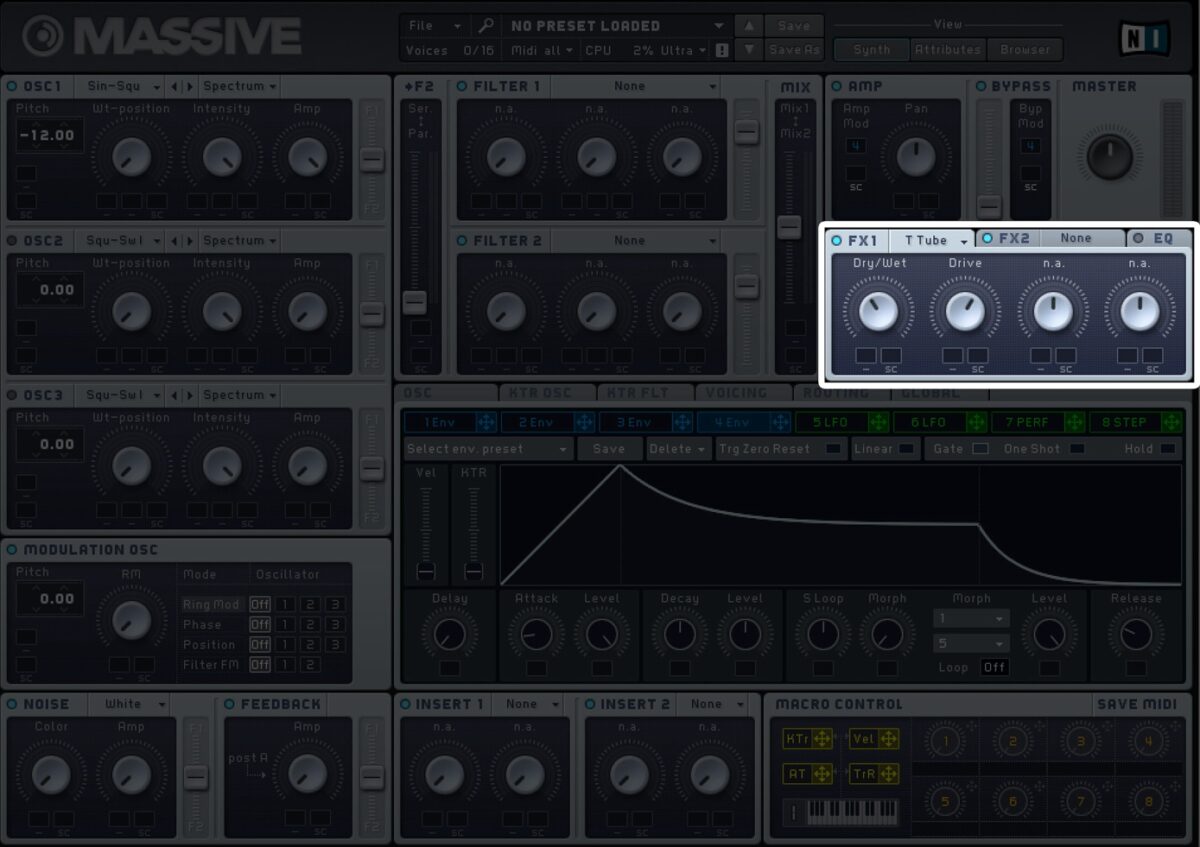
Now, give it a listen and you’ll be able to hear the subtle harmonics that were added to the original sine sub bass.
You can also use distortion plugins like the Dirt plugin in the Crush Pack Effects Series (also included in Komplete 14) to emulate saturation. This will add in harmonics in a musical way, enhancing the presence of your sub bass across various playback systems.
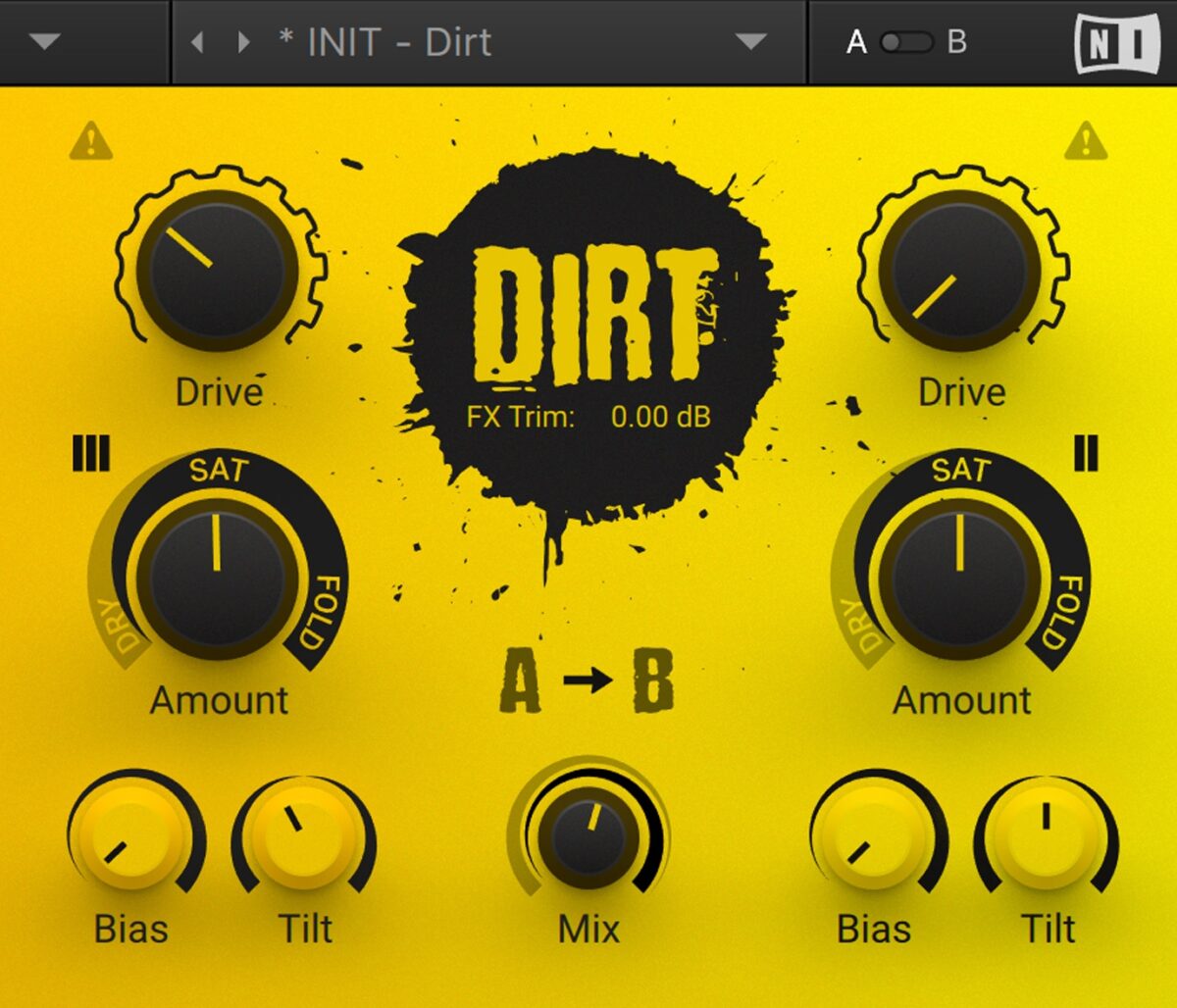
Take a listen to the same sub bass we’ve been working with, now run through the Dirt plugin with the parameters seen above.
3. Use the ADSR envelope
Adjusting the ADSR (Attack, Decay, Sustain, Release) envelope of your sub bass can significantly impact its punchiness. A shorter attack time can make the initial hit more pronounced, while playing with decay and sustain can affect how the sound evolves after the initial hit. Tailoring these parameters can help your sub bass fit the groove and energy of your track perfectly.
By modifying the envelope of your sub bass in Massive, you can achieve very different effects. Here’s an image of the original envelope of the sub bass we’ve been working with.
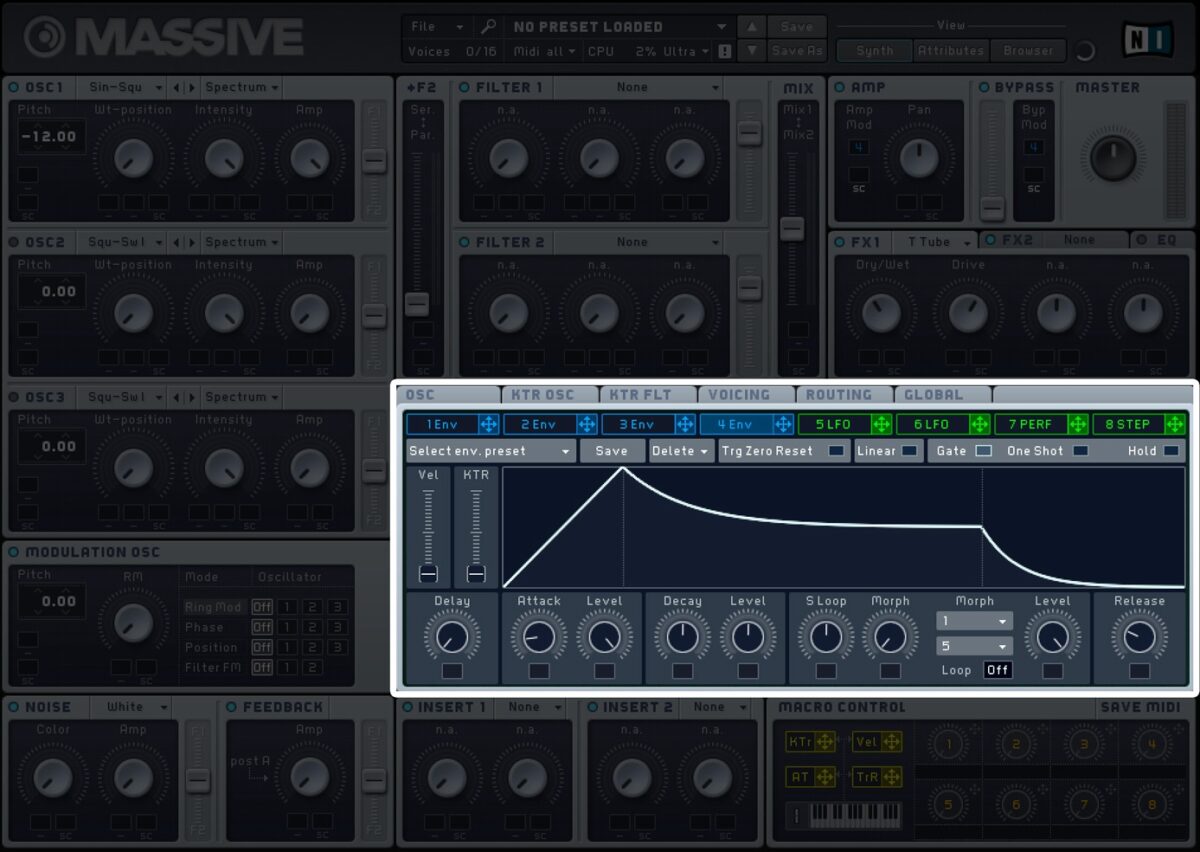
Now, let’s see what happens when we increase the Attack time, increase the Decay Level, and shorten the Release time so that it looks like this:
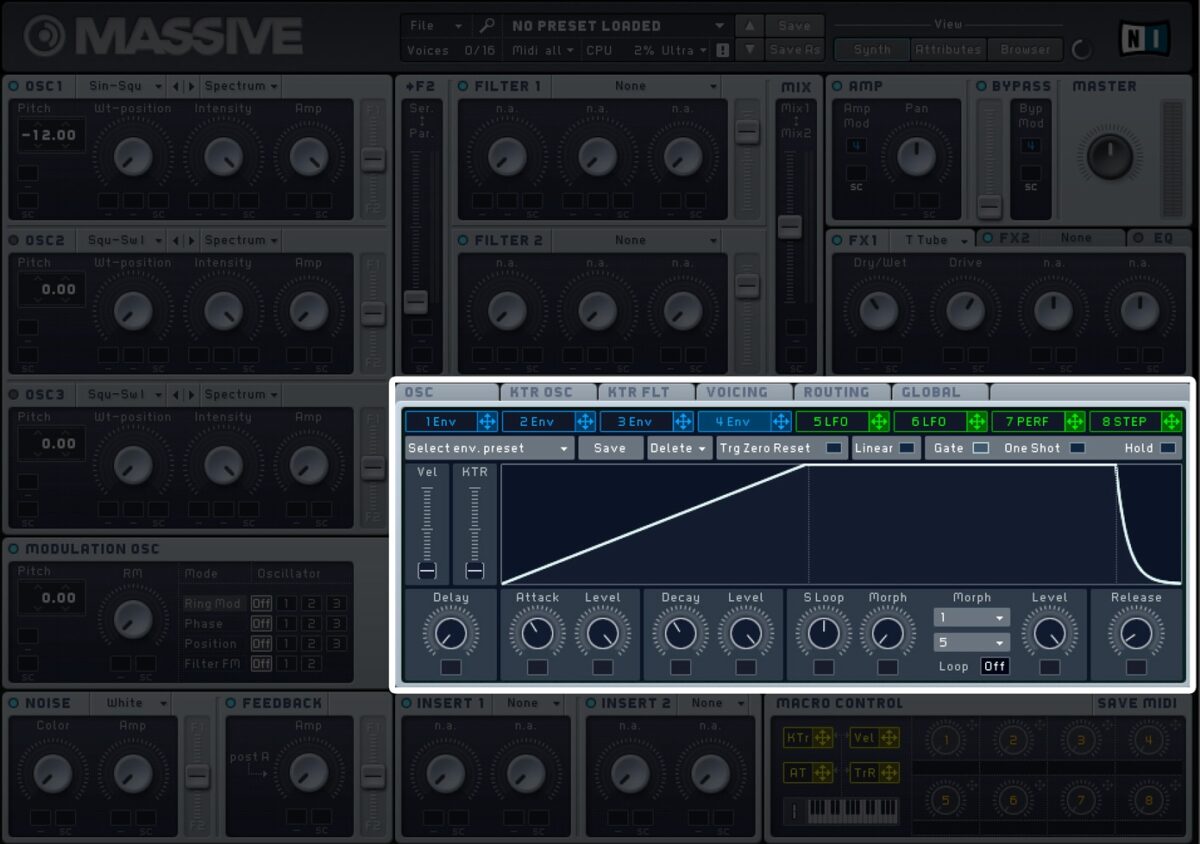
Take a listen and you’ll hear how modifying the ADSR parameters can drastically change the overall sound, quality, and mood of your sub bass.
4. Add modulation for movement
Don’t be afraid to experiment with modulation to add interest to your sub bass. Modulating parameters like the volume, filter cutoff, or oscillator pitch with a low frequency oscillator (LFO) can give your sub bass a pulsating, living quality that keeps listeners engaged. This technique works well in genres where the sub bass is a focal point, adding a dynamic element to the track.
For example, you can add an LFO to your oscillator in Massive by simply clicking and dragging “5 LFO” to its Amp knob (as seen below). This will allow you to affect the volume of your sub bass with the LFO and create a bit more movement.
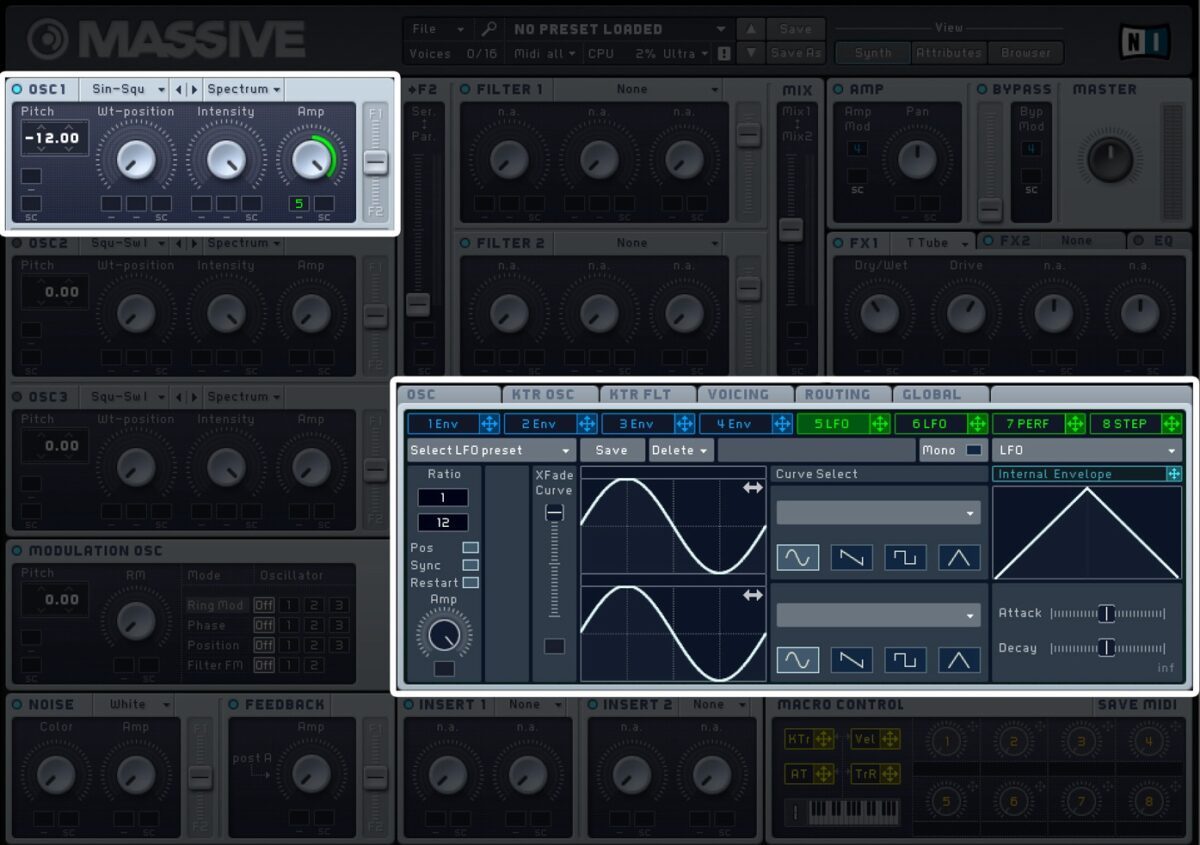
With the LFO parameters seen above, the sub bass we’ve been working with now sounds like this:
5. Add punch and clarity to your sub bass
There are two main tools you can use to increase the punch and clarity of your sub bass: compression and equalization. Let’s take a look at each.
Compression
Use compression to control dynamics and sustain of your sub bass. A fast attack can reduce peaks, while a longer release maintains energy. I recommend using a compressor plugin like Supercharger GT to help shape the overall dynamics of your sub bass.
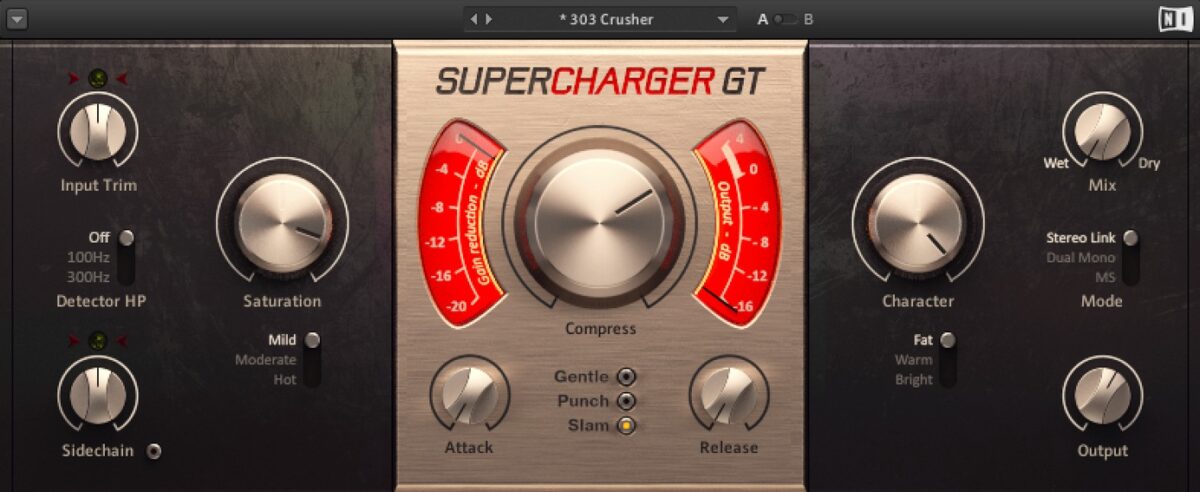
In order to add more of a punchy quality to my sub bass, I used a preset in Supercharger GT called “303 Crusher.” Let’s give it a listen before any compression first.
Now, give it a listen with Supercharger GT turned on.
As you can hear, adding compression to your sub bass can drastically change the feel of your low end. Whether you want it quick and punchy, or you need those sub bass frequencies to linger longer, using a compressor will allow you to manipulate the dynamics of your sub bass to sculpt the sound you want.
Equalization
Using equalization (EQ) on your sub bass is a crucial step to improve its clarity and ensure it fits perfectly within your mix. The first move is often applying a high-pass filter to roll off frequencies below 20 Hz, which, while inaudible, can eat up valuable headroom and muddy your mix.
Next, carve out a niche for your sub bass by attentively cutting frequencies that clash with the kick drum or bassline, typically in the 60-100 Hz range, depending on your track’s key and the tonal quality of the kick. This creates a clean separation that allows all elements to shine without stepping on each other.
Additionally, slight boosts around 100-150 Hz can add warmth and presence to your sub bass, making it more perceptible on smaller speakers. However, you don’t want to overdo it – too much EQ can strip away the natural character of your sub bass.
Here’s a screenshot of what my typical sub bass EQ curve looks like using the Equalizer module in iZotope Ozone (also included in Komplete 14).
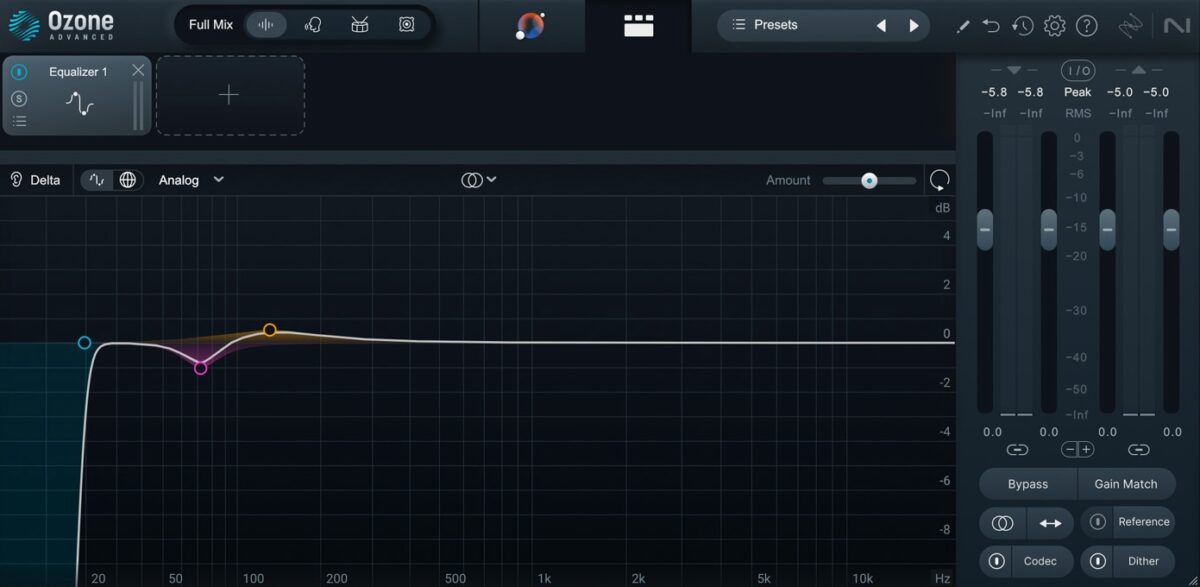
Using these EQ techniques judiciously will help you sculpt a sub bass that’s both powerful and clear, providing a solid foundation that supports the rest of your mix without overwhelming it.
How to use sub bass
Incorporating sub bass into your music can enhance the emotional and rhythmic impact of your tracks. One approach is using it as a foundational element in electronic and dance genres, where the sub bass can drive the track forward with its sound, creating a danceable beat.
In hip-hop and R&B, it often acts as the backbone, providing a deep, resonant bed over which vocals and melodies can soar, adding a sense of space. Ambient and cinematic music benefit from sub bass by using it to create atmospheric depth and tension, subtly enveloping the listener in a cocoon of sound.
And as we saw earlier when we made our sub bass, experimenting with the texture and dynamics of sub bass can add interest and complexity. For example, using techniques like modulation to make the bass “breathe” or layering different tones for a richer sound. Regardless of genre, sub bass is a versatile tool that, when used thoughtfully, can significantly add to the overall listening experience.
Final pro tips for sub bass
Whether you have your sub bass follow along with your bass line, use it only to accentuate certain notes, or let it steal the show by occupying the entire low end, here are some of my top pro tips for using sub bass in your productions.
Layer your sub bass
Sometimes, one sub bass isn’t enough to achieve the desired impact. Layering different sub bass sounds can add depth and complexity. For example, layering a clean sine wave with a subtly distorted triangle wave can combine the best of both worlds: solid low-end power with a hint of harmonic interest. When layering, pay close attention to phase alignment and check your EQs to make sure the layers complement rather than conflict with each other.
Use sidechain compression
Sidechain compression is a powerful technique to ensure your sub bass and kick drum coexist harmoniously in the mix, each with its own clear space. By applying sidechain compression to your sub bass, triggered by the kick drum, the sub bass volume temporarily ducks each time the kick hits. This creates a rhythmic pulse that not only prevents frequency clashes but also adds a dynamic movement to your track, enhancing the groove.
Monitor your volume levels
Volume leveling is a crucial step in integrating your sub bass seamlessly into the mix, ensuring it provides a solid foundation without overshadowing the other musical elements. By carefully adjusting the volume of your sub bass, you can maintain a balance that complements the overall track, allowing it to support the mix rather than dominate it.
Use automation
For parts of your track that might have varying energy levels or where the sub bass needs to be more prominent or subdued, volume automation becomes an invaluable tool. This technique allows for precise control over the sub bass volume throughout different sections of your song, adapting in real-time to the dynamic needs of the track to keep the energy consistent and engaging.
Play with spatial placement
While sub bass frequencies inherently possess an omnidirectional quality, making them feel like they’re coming from everywhere, a strategic approach to spatial placement can elevate your track. By applying slight stereo widening to the upper harmonics of your sub bass, you introduce an element of spatial intrigue without compromising the core low-end focus. However, it’s important to tread lightly with stereo effects on low frequencies – overdoing it can lead to phase issues that muddy your mix or weaken the impact of your sub bass when played on mono systems, such as club PA setups.
Reference and test
Ensuring your sub bass performs consistently across a variety of listening environments is crucial for its effectiveness in your mix. Reference and test your track on different systems – these can range from high-quality studio monitors to basic headphones and even built-in smartphone speakers. This will show you how your sub bass translates in real-world scenarios, highlighting any issues with balance, clarity, or presence that might not be apparent in the studio. By making adjustments based on these tests, you can achieve a sub bass that maintains its impact, whether it’s felt on a club sound system or heard through earbuds during a morning commute.
Start adding sub bass to your music
Mastering the art of sub bass production can bring body and depth to your music that engages listeners on a visceral level. By understanding the foundational concepts, experimenting with sound design, and applying careful processing and mixing techniques, you can create impactful sub bass for any genre of music you might be making. To get access to all of the sub bass software tools I’ve mentioned in this article, learn more about Komplete 14.








